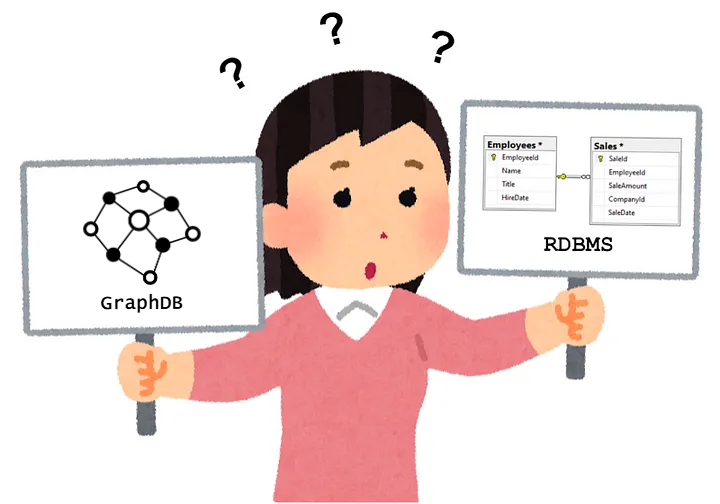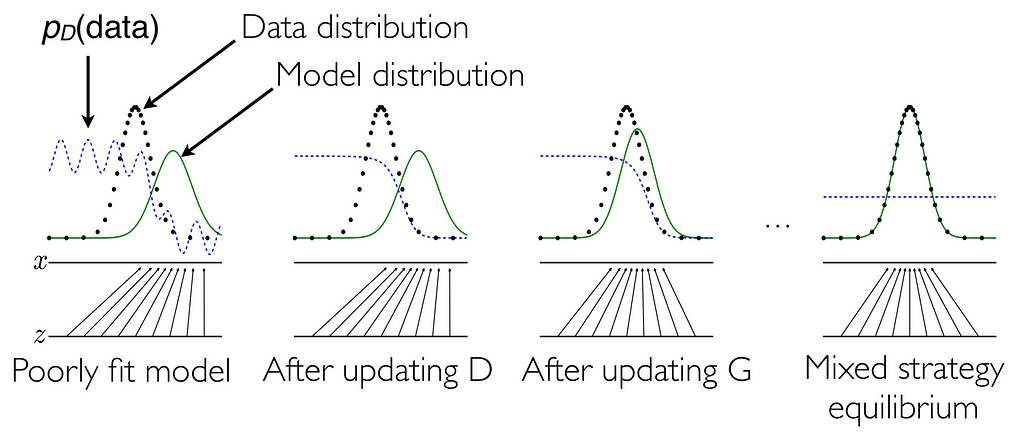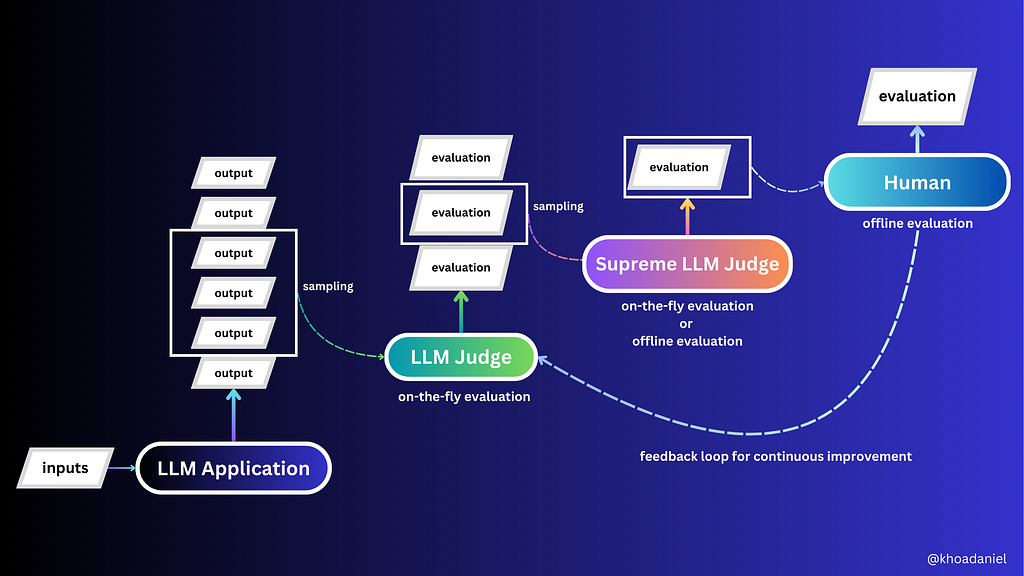Wednesday, July 31, 2024
Tuesday, July 30, 2024
Data Warehouse, Redefined
Improving RAG Answer Quality Through Complex Reasoning
A Practical Guide to Contrastive Learning
Monday, July 29, 2024
A Simple Regularization for Your GANs
Was Michael Scott the World’s Best Boss?
Saturday, July 27, 2024
Friday, July 26, 2024
Thursday, July 25, 2024
Unit Disk and 2D Bounded KDE
Wednesday, July 24, 2024
Tuesday, July 23, 2024
Sunday, July 21, 2024
You Don’t Need Matplotlib When Pandas Is Enough for Data Visualisation
Advanced Data Modelling
How To Start Technical Writing & Blogging
Saturday, July 20, 2024
Friday, July 19, 2024
Thursday, July 18, 2024
YOLO inference with Docker via API
Wednesday, July 17, 2024
Why Machine Learning Is Not Made for Causal Estimation
AI, Write and Style My CV
Tuesday, July 16, 2024
Monday, July 15, 2024
Sampling from Multivariate Distributions: From Statistical to Generative Modeling
Chaining Pandas Operations: Strengths and Limitations
Mastering Amazon Cancelled Orders: A Comprehensive Guide for Sellers

Effectively Manage Amazon Order Cancellations, Improve Seller Metrics, and Optimize Your Amazon Business Performance
Understanding and effectively managing order cancellations ensures a healthy account and improves customer satisfaction for all Amazon sellers.
This comprehensive guide will walk you through the intricacies of Amazon's canceled orders, providing you with the knowledge and strategies to navigate this aspect of e-commerce successfully.
Understanding Amazon Order Cancellations
Order cancellations on Amazon occur when a purchase is terminated before the item is shipped. While cancellations are a normal part of e-commerce, they can impact your inventory management, seller metrics, and overall business performance if not handled properly.
The Buyer’s Perspective: When and How Customers Can Cancel Orders
Amazon provides buyers with a straightforward process for canceling orders, but the options available to them depend on the timing:
- Within the first 30 minutes: Buyers can cancel their order directly using the “Cancel Items” option in their Amazon account under “Your Orders.”
- After 30 minutes: Direct cancellation is no longer possible. Instead, buyers must submit a cancellation request for the seller to review.
Understanding this timeline is crucial for sellers, as it affects how you interact with cancellation requests and manage your inventory.
Types of Order Cancellations and Their Impact on Sellers
Amazon categorizes cancellations into several types, each with different implications for sellers:
- Official buyer-initiated cancellations: These are processed through Amazon’s system and don’t negatively impact your seller metrics.
- Unofficial buyer-initiated cancellations: When buyers request cancellations through the Buyer-Seller Messaging tool, these can affect your Cancellation Rate metric if not handled correctly.
- Seller-initiated cancellations: Occur when you can’t fulfill an order due to inventory issues, pricing errors, or other reasons. They generally impact your Cancellation Rate.
- Amazon-initiated automatic cancellations: Amazon may cancel orders automatically in certain situations, such as when a seller hasn’t confirmed shipment within seven days of the expected shipping date.
The Official Cancellation Process: Step-by-Step Guide
When a buyer submits an official cancellation request, follow these steps to process it:
- Log into your Seller Central account and go to “Manage Orders.”
- In the “Unshipped” tab, use the “Buyer Requested Cancel” filter to find relevant orders.
- Look for orders with a banner stating, “The buyer has requested that this order be canceled. Canceling this order will not affect your Cancellation Rate metric.”
- Click “Cancel order” under the Actions column.
- On the cancellation page, “Buyer canceled” will be pre-selected as the reason. This cannot be edited for official buyer-requested cancellations.
- Click “Submit” to complete the cancellation.
Processing cancellations this way ensures they won’t negatively impact your seller metrics.
Navigating Unofficial Cancellation Requests
When buyers request cancellations through the Buyer-Seller Messaging tool, it’s considered an unofficial request. These messages are typically labeled as “Inquiries from Amazon customers.” If you cancel an order based on these messages, it will count against your Cancellation Rate metric.
To handle these situations:
- Respond to the buyer’s message.
- Request that they submit an official cancellation through their Amazon account.
- Provide instructions: “You can cancel the order in your Amazon account at Your Account > Your Orders > Request Cancellation.”
This approach helps maintain your metrics while still addressing the buyer’s needs.
Impact of Cancellations on Seller Metrics
Amazon uses a Cancellation Rate metric to assess seller performance. Not all cancellations affect this metric equally:
- Official buyer-requested cancellations don’t impact your rate.
- Unofficial cancellations (via messaging) and seller-initiated cancellations do count against you.
- Some Amazon-initiated automatic cancellations may affect your rate, while others (like fraudulent buyer detection) don’t.
Maintaining a low Cancellation Rate is crucial for your account health and selling privileges.
Partial Cancellations and Refunds: What Sellers Need to Know
Amazon doesn’t currently support partial order cancellations. However, you can issue full or partial refunds for individual items in an order using the Refund Calculator in Seller Central. Remember, to initiate a refund, you must have already confirmed the shipment for the order.
Leveraging Technology for Efficient Cancellation Management
Amazon provides several tools to help sellers manage cancellations more effectively:
- Order Reports: A field called “is-buyer-requested-cancellation” is in your order reports. This field shows “TRUE” for orders with buyer cancellation requests.
- APIs for tracking cancellations: Selling Partner (SP) API includes cancellation information in order item responses, including a “isBuyerRequestedCancel” flag and “buyerCancelReason” string.
Utilizing this data can streamline cancellation management and help you stay on top of order status changes.
Best Practices for Minimizing Cancellations
While some cancellations are inevitable, you can take steps to minimize their occurrence:
1. Maintain accurate inventory levels to avoid stockouts.
2. Provide clear, detailed product descriptions to set accurate expectations.
3. Price your items competitively and accurately.
4. Process and ship orders promptly to reduce the window for cancellations.
5. Use vacation settings when you cannot fulfill orders to prevent unwanted orders and subsequent cancellations.
How to be a Data-Driven Advertiser with Amazon Cancelled Orders
Understanding and analyzing your canceled order data can provide valuable insights for your Amazon business. Here’s how you can leverage this information:
Manual Data Access Process
1. Log into your Amazon Seller Central account.
2. Navigate to the Reports section.
3. Generate order reports, including those with cancellation data.
4. Download these reports as CSV or Excel files for analysis.
While this process provides useful information, it can be time-consuming and may not offer real-time insights for frequent analysis.
Amazon Order Data Automation
To truly harness the power of your Amazon data, including insights from canceled orders, consider leveraging data automation solutions like Openbridge.
No more manual file downloads. Get code-free, fully automated Amazon Selling Partner API data pipelines for orders, inventory, traffic, fulfillment, finance, and more.
- FBA Fees
- Order Reports
- Finance API
- Fulfillment
- Inventory
- Sales & Traffic
- Orders API
- FBM/MFN PII
- Settlement
- Returns
Openbridge’s unified data approach can significantly enhance your reporting and analytics capabilities, powering tools like Google Data Studio, Tableau, Microsoft Power BI, Looker, Amazon QuickSight, SAP, Alteryx, dbt, Azure Data Factory, Qlik Sense, and many others.
This integration creates an analytics-ready single source of truth, enabling more effective decision-making across various aspects of your Amazon selling strategy.
Mastering Cancellations for Amazon Selling Success
Managing Amazon's canceled orders effectively is crucial for any successful seller. By understanding the different types of cancellations, following the correct procedures, and leveraging data and technology, you can minimize the negative impact of cancellations on your business.
Remember, while cancellations are a normal part of e-commerce, how you handle them can set you apart as a top-performing Amazon seller.
Getting Started with Amazon Cancelled Orders Automation
Ready to take your Amazon business to the next level? Ditch the messy, manual reporting for Amazon Cancelled Orders.
>>>>
Get a 30-day free trial to try Amazon Orders automation and see how it can transform your approach to Amazon selling.
<<<<<
Mastering Amazon Cancelled Orders: A Comprehensive Guide for Sellers was originally published in Openbridge on Medium, where people are continuing the conversation by highlighting and responding to this story.
from Openbridge - Medium https://ift.tt/RjIcHpN
via Openbridge


































